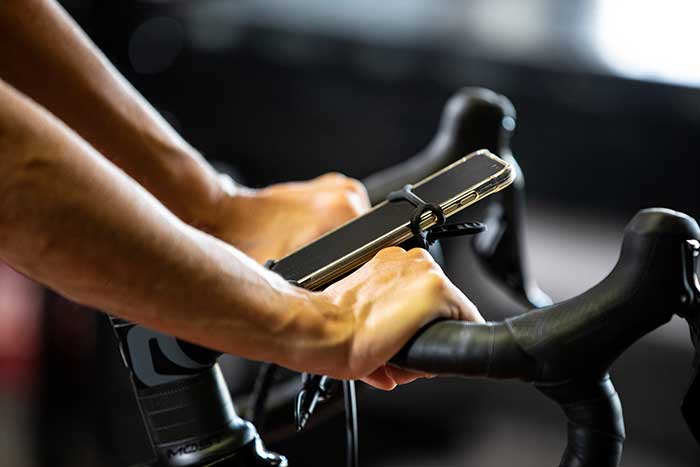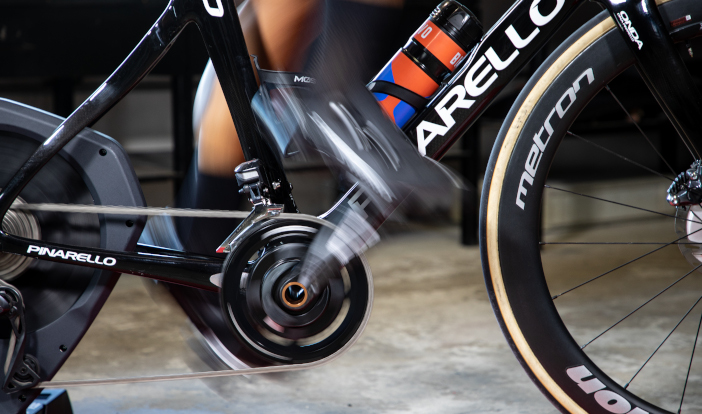The critical power represents the highest sustainable power without suffering fatigue and in theory, the maximum power a person can sustain for several hours.
Marco Compri, technical coach of the Italian Cycling Federation and head of the training projects at Bikevo, explains us the correct way to train for cycling.
The amount of time in which it is possible to sustain a certain activity at a certain intensity (tlim). It decreases following the hyperbolic curve of the power output, both during an exercise that involves a single muscle group (Monod and Scherrer 1965) as during an exercise that involves the whole body, such as cycling (Poole et al., 1988).
The critical power represents the highest sustainable power without suffering fatigue (Monod e Scherrer 1965; Moritani e al 1981) and in theory, the maximum power a person can sustain for several hours (Vautier et al., 1995).
In practice, the critical power represents the asymptotic power shown by the relationship between power and time. Moritani et al (1982) suggested that, in cycling, a power output inferior to the CP (critical power) could be maintained for a long time without too much effort, while, a power output higher than the CP generated an accumulation of latic acid and the burning of the energy reserves to exhaustion.
Notwithstanding some criticism on the concept of critical power, as for instance when the CP is applied to an activity where the relationship between speed and metabolic power is not constant (Di Prampero 1999), it can be used as a parameter to indicate the fitness level of a subject (Reilly 1991).
The classic protocol to determine the critical power includes three or more tests at Vo2max, carried out at an even intensity, preferably on a climb or on the track, in different days (with adequate recovery) and with an adequate distribution of work and the evaluation of the time in which the subject is able to maintain that certain power constantly. The time at which exhaustion is reached is then inserted in a graph that shows the relationship between power and time.
The asymptote of the hyperbola that is obtained represents the critical power of the subject.
It is, however, possible to transform the hyperbola into a linear relationship between the time limit (tlim) and the total amount of work done during the exercise (work limit, wlim) as follows:
wlim= a + (b * tlim)
where "b" represents the critical power (critical power CP, power asymptotic to the hyperbola that links the power output with the time of exhaustion) and "a" represents the anaerobic capacity (the amount of work that can be sustained above the CP using the anaerobic mechanism; Monod and Scherrer1965, Moritani et al 1982, Poole et al.1990).
Considering a = anaerobic work capacity (AWC), b = critical power (CP) we can obtain:
wlim= AWC + (CP * tlim)
The CP value obtained by the relationship work/time of exhaustion helps us estimate the power that can be sustained over a long period of time and corresponds to the parameter of the anaerobic threshold. The relationship power/time is an instrument to evaluate both the characteristics of the individual as well as the fitness level of the subject during the agonistic season.
Moreover, the relationship power and work/time is influenced by the type of workout and is also an important feedback for the trainer and athlete:
- By observing the relationship between power/time or work/time it is possible to identify weaknesses or a loss in performance and as such allows us to intervene with specific workouts;
- It is possible to see if performance in a certain distance has improved by any increment in the AWC or CP.
And finally, it allows us to predict the performance in any kind of race that requires an overall steady effort.
Even if by using the data from the indoor tests you can determine the CP and the power or amount of time between the extremes of the work/time relationship, most people prefer to apply the classic protocols to identify the critical power and to carry out tests to exhaustion (the duration of which is between 30 second and 60 minutes).
It should, however, be considered that, as with all tests at maximum power and especially if they are of a long duration, can be exhausting, particularly when they take place regularly.

Editorial Board
You might also be interested in


